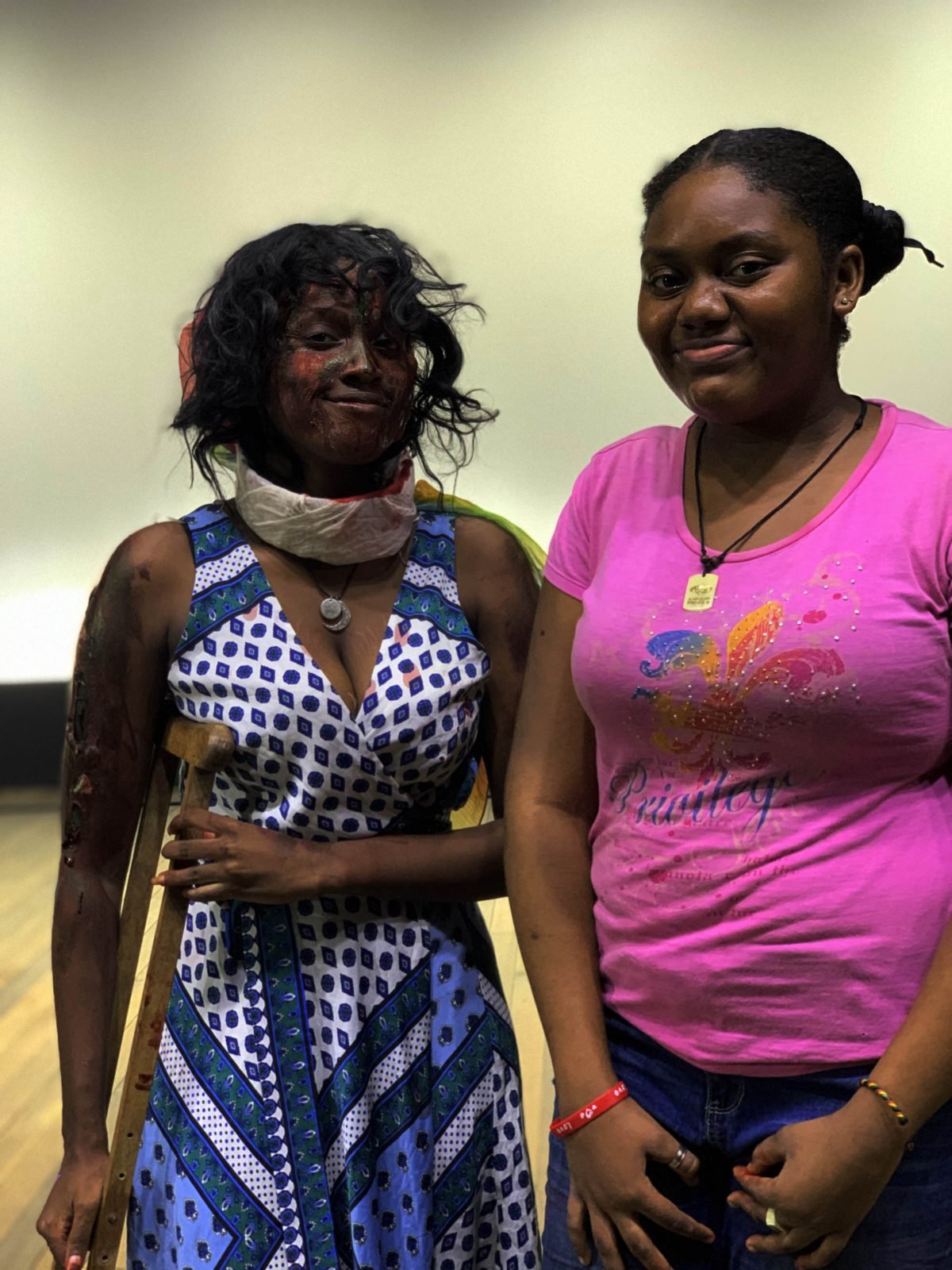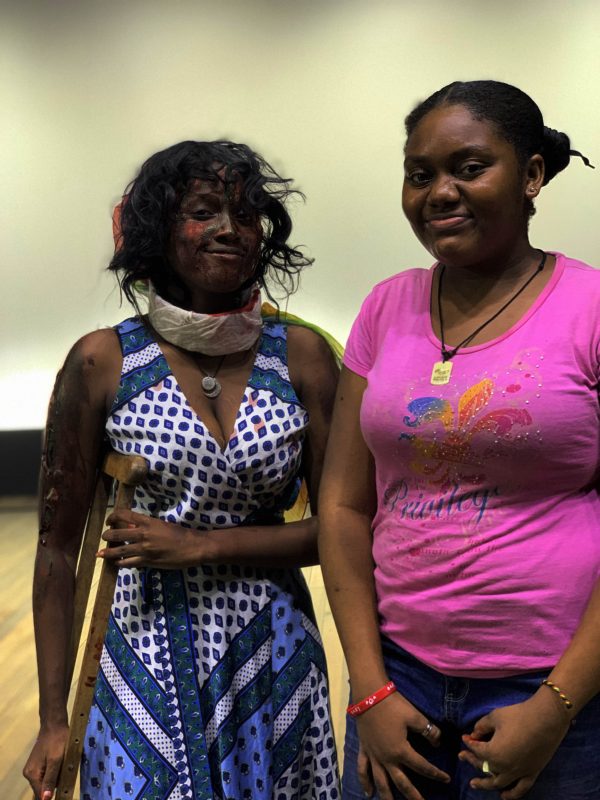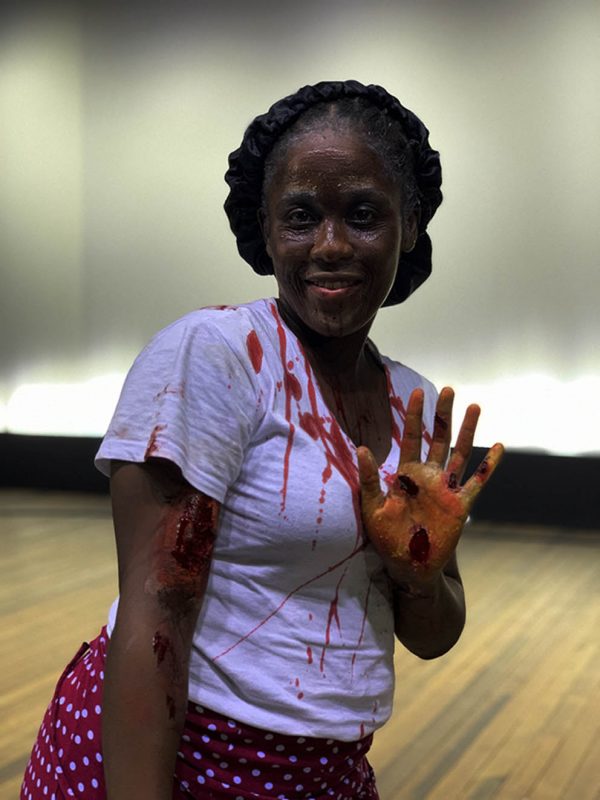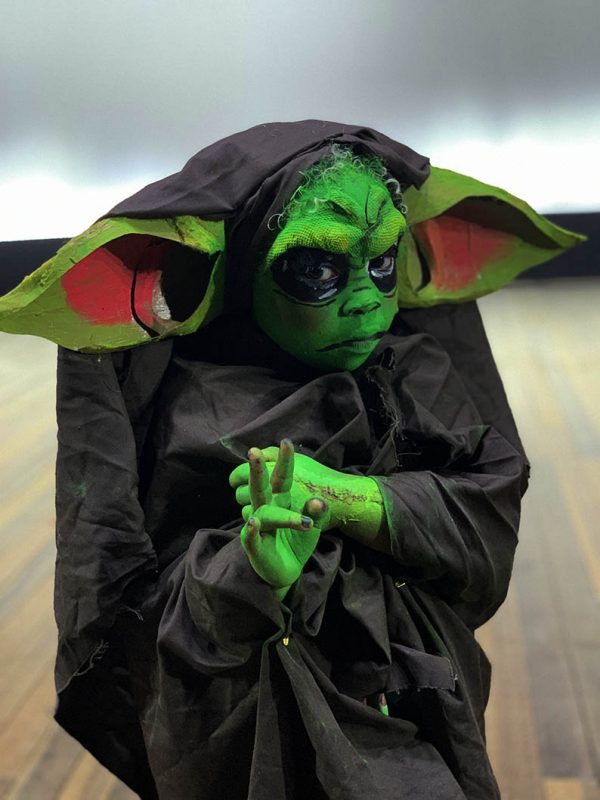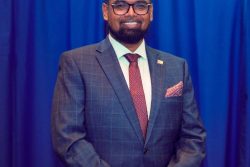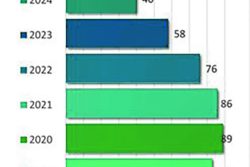 At the end of last month, there was a theatrical exhibition on stage at the National Cultural Centre that was not widely publicised. It was a staged display of theatrical makeup done by students of Stage-Craft to show off what they had learnt in the art of makeup for the stage and film. It was spectacular and instructive, not seen by many people, but the modesty of its public announcement was in stark contrast to its importance and value.
At the end of last month, there was a theatrical exhibition on stage at the National Cultural Centre that was not widely publicised. It was a staged display of theatrical makeup done by students of Stage-Craft to show off what they had learnt in the art of makeup for the stage and film. It was spectacular and instructive, not seen by many people, but the modesty of its public announcement was in stark contrast to its importance and value.
The event was produced by part-time lecturer in makeup at the National School of Theatre Arts and Drama (NSTAD) Steve King. It was designed to show the work of students at the NSTAD who had just completed the Makeup Module in the course: Introduction to Elements of Stage-Craft. It was a creative opportunity for the students to exhibit the outcome of their final assignment, producing the work for which they were graded. This was part of a larger programme of theoretical and practical study, which in turn may be placed in a wider context.
In 2014, the Institute of Creative Arts (ICA) was established by the Department of Culture, which is within the Ministry of Culture, Youth and Sport. The idea was that this institute would be instrumental in expanding and forwarding national training in the visual, literary and performing arts in Guyana. The ICA brings together under one administrative umbrella the four schools in the visual and performing arts that already existed, creating a structure not unlike the famous Edna Manley College of the Visual and Performing Arts in Jamaica. This was formerly known as the Cultural Training Centre which formed a college out of four already existing schools – the very old Jamaica School of Art and Jamaica School of Music, and the relatively younger Jamaica School of Drama and the School of Dance.
Although younger than the others, the Jamaica School of Drama, especially, distinguished itself by being a leader in the field. It was the first, and for several years the only drama school in the Caribbean and served the region well, training many students from the other countries. Trinidad and Tobago and Barbados then had alliances with the UWI and thus emerged the Department of Creative and Festival Arts in Trinidad and the Errol Barrow Centre for Creative Imagination in Barbados.
Guyana followed a similar path. Of its two well established schools, the National School of Dance is older dating back to 1974, and the ER Burrowes School of Art was founded in 1975. It took years, but the National School of Music was formed in 2010 and then came the NSTAD in 2013. But soon after that the unifying force of the ICA came into existence and now the four schools provide consolidated training in similar fashion to Jamaica, Trinidad and Tobago and Barbados.
At NSTAD, training is provided in technical areas of theatre. The course, Introduction to Elements of Stage-Craft, has several modules: Stage Management, Properties, Lighting and Sound, Costume Design, Set Design and Makeup. The makeup course is conducted by King, a professional in the field popularly known at home and around the region by his trade name, Bravo Arts.
In this module, students come from different programmes such as the Diploma in Drama, as well as Technical Certificates in Acting or in Film and Animation. They are trained in makeup for stage, film and SFX (special effects).
For their final assignment, students had to create a character from real life or imagination, using makeup to bring that character to life. They had to apply the makeup on a model or they could use themselves as models. This work was then graded and exhibited on stage using lighting and sound effects. The exercise produced an interesting range of characters, each with a background described through voice, enhanced by music and sound effects and dramatised by the models.
Two of the students, members of the National Drama Company (NDC) who are already practising dramatists and graduates of the diploma programme, seemed to have taken the opportunity to do this as a continuing refresher course.
Esther Hamer, a tutor in Design at NSTAD, created the imagined character Baby Yoda, which was presented on stage by model Jasmine Hamer.
Ayanna Waddell, an NSTAD tutor in Stage Management, produced “Eman”, a supernatural character (merwoman) from folklore, modelled on stage by Justine Hamer.
Francwa Fortune, an acting student, designed a character for whom the model was Ezekiel Hamer.
Navita Gunraj, a student in the Technical Certificate in Acting, created “Amy, a Zombie Woman” and was her own model.
Svetlana Duke, a diploma student in Drama’s character was “Johnny” who was modelled by Stephan Duke.
Acting student Christie Cordis’s character “Ms Clara” was modelled by Aaliyah McDonald.
Olivia Liverpool, a student in the Technical Certificate in Acting, created the character “Carol Hope” and the model was Yetunde Hope.
Shakira Fordyce, a student in the diploma programme in Theatre Arts and Drama, designed the character “Faith”, who was modelled by Shellon Grant.
A notable feature of these presentations was the way some students took advantage of the exercise to comment on social issues. Each character was accompanied by a description outlining the story behind the appearance on stage, which was narrated as the model appeared. In one case, the subject was domestic violence. The makeup applied reflected a woman battered at the hands of her partner. Another character was a victim of a hit and run vehicular incident. The details and makeup revealed the resulting injuries.
There was a different kind of exploration into folklore with the visual interpretation of the “merwoman”. Internationally, this female inhabitant of the seas is known as a mermaid, and there are different types and stories. In Guyana, she inhabits the rivers as well as the ocean and is called “wata mama”, “fair-maid” or “fe-maid”. This mythical woman has supernatural powers and is a danger to roaming and predatory men, but she is also a source of wealth if one gets hold of her comb. In another form she is a water goddess, a spiritual being worshipped as a deity.
There were also other creations of spiritual or supernatural beings, either linked to local beliefs or entirely forged by the imagination.
In all cases the effective application of theatrical and SFX makeup was essential and the skills acquired by the students tested. The exhibition was a creative way of evaluating the students’ performance and added some interest to training in the theatrical arts.
